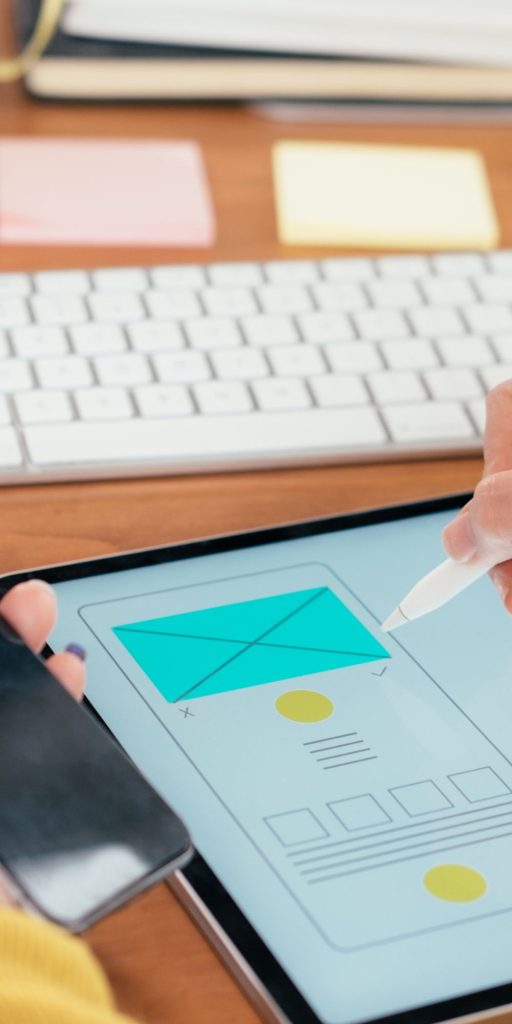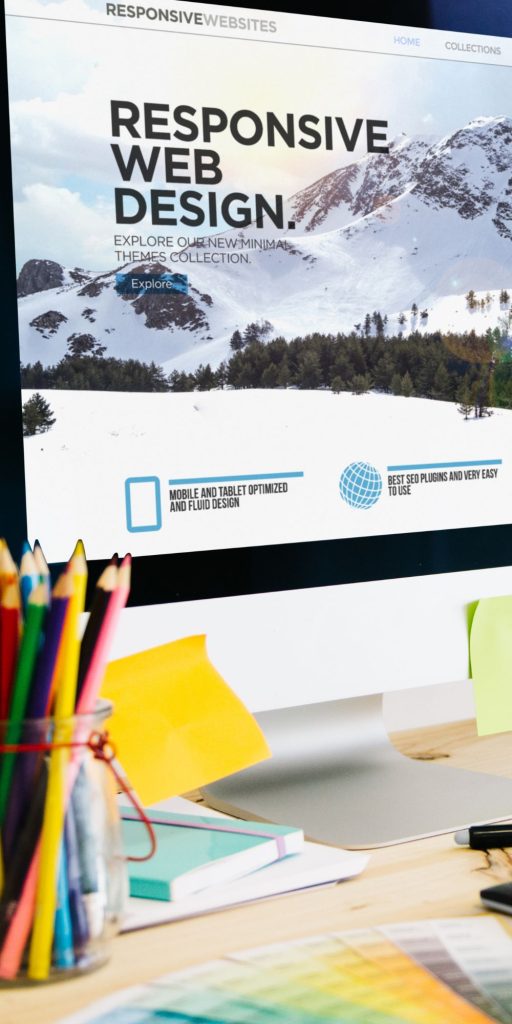Graphic artist Glyfada

Are you fascinated by the magic behind the eye-catching visuals that capture our attention? Ever wondered how graphic designers bring their digital creations to life on paper? In this article, we will delve into the secrets of a graphic designer's work, from pixel to print.
Drawing on years of experience and expertise, graphic designers possess an excellent eye for detail and an innate sense of creativity. They skillfully combine typography, colors and images to convey powerful messages and evoke emotions. But their work goes beyond just creating visually appealing designs.
The role of a graphic designerGraphic designers play a vital role in the world of visual communication. They are the masterminds behind logos, advertising, packaging, websites and more. These professionals possess a unique blend of artistic talent and technical skills, enabling them to transform concepts into visually stunning designs.
The main responsibility of one graphic designer is to understand the needs of its customers and translate them into attractive visual representations. They work closely with clients, marketing teams and other stakeholders to ensure the final product aligns with the desired brand message and identity. This requires a deep understanding of the target audience, market trends and design principles.
In addition to their creative ability, graphic designers must also have excellent communication and problem-solving skills. They must effectively communicate their ideas and concepts to clients and be able to adjust their designs based on feedback. Attention to detail is crucial, as even the smallest element can significantly affect the overall design.
Basic Skills for Graphic DesignersTo excel in the field of graphic design, the professionals they must possess a variety of basic skills. Let's take a closer look at some of these skills and how they contribute to a graphic designer's success.
1. Creativity: Creative thinking is at the core of graphic design. It includes the ability to generate unique ideas, think outside the box and approach challenges design with an open mind. A graphic designer's creativity allows them to create visually appealing designs that stand out from the crowd.
2. Technical proficiency: Graphic designers rely on various software programs to bring their ideas to life. Proficiency in industry standard tools such as Adobe Photoshop, Illustrator and InDesign is essential. These tools allow designers to manipulate images, create vector graphics, and design layouts efficiently.
3. Typography: Typography is the art of arranging typefaces in a visually appealing and legible manner. Graphic designers must have a keen eye for choosing appropriate fonts, understanding spacing and kerning, and creating hierarchy in their designs. The right typography can greatly improve the overall aesthetic and impact of a design.
4. Color Theory: Understanding color psychology and how different colors interact is vital for graphic designers. Colors can evoke emotions, convey meaning and create visual harmony. Designers must have a solid grasp of color theory to effectively use color in their designs and communicate the desired message.
5. Communication skills: Graphic designers often work in collaborative environments, interacting with clients, marketing teams, and other designers. Effective communication skills, both verbal and written, are essential for understanding customer requirements, presenting design concepts and receiving feedback. Being able to articulate design choices and explain concepts clearly is critical to successful collaboration.
Understanding the Design ProcessGraphic design is a multi-step process that involves careful planning, conceptualization and execution. Let's explore the typical steps involved in the design process and how graphic designers bring their ideas to life.
1. Research and information gathering: The first step in the planning process is to gather information about the project. This includes understanding the client's objectives, target audience and any special requirements or limitations. Designers conduct research, analyze competitor designs, and gain a thorough understanding of the industry landscape.
2. Concept development: Once armed with the necessary information, graphic designers brainstorm and develop concepts that align with the project's goals. This is a creative phase where ideas are explored, sketches are made and initial designs take shape. Designers experiment with different layouts, color combinations and typography choices.
3. Plan execution: After finalizing the concept, designers move to the execution phase. They use software tools such as Adobe Photoshop or Illustrator to create digital mockups of their designs. This includes arranging elements, improving typography, choosing colors and embedding images. The designers they pay attention to composition, balance and visual hierarchy to ensure the design is visually appealing and effectively communicates the intended message.
4. Feedback and revisions: Once the initial design is complete, graphic designers seek feedback from clients or relevant stakeholders. This feedback helps identify areas for improvement or adjustments. Designers make the necessary revisions based on the feedback they receive, ensuring that the final design meets the client's expectations.
5. Prepare files for printing: If the final design is intended for printing, designers must ensure that the files are properly prepared. This includes selecting appropriate color profiles, setting bleeds and margins, and exporting files to the correct file format. Attention to detail is vital at this stage to ensure the design is print ready and free of technical issues.
Graphic Design Tools and SoftwareGraphic designers rely on a variety of tools and software to bring their creative visions to life. Let's explore some of the key tools and software commonly used in the industry.
1. Adobe Creative Cloud: Adobe Creative Cloud is the standard software suite for graphic design. It includes popular applications such as Adobe Photoshop, Illustrator, InDesign and more. These applications offer a wide range of features and capabilities that allow designers to create stunning graphics, manipulate images and produce print-ready designs.
2. Sketch: Sketch is a popular vector graphics editor for Mac widely used by designers for web and app design. It offers an intuitive interface, powerful vector editing tools and features specially designed for digital design.
3. Figma: Figma is a cloud-based design tool that enables real-time collaboration and prototyping. It is especially useful for remote teams or designers working on collaborative projects. Figma enables designers to create interactive prototypes and share design files seamlessly.
4. Canva: Canva is a user-friendly graphic design platform aimed at both beginners and professionals. It offers a wide range of pre-designed templates, fonts and images, making it easy to create visually appealing designs without extensive design skills.
5. Procreate: Procreate is a powerful digital painting app for iPad that is preferred by many illustrators and designers. It offers a huge range of brushes, layers and editing tools, allowing artists to create stunning illustrations and digital artwork.
Typography and Color Theory in Graphic Design
Typography and color theory are two fundamental aspects of graphic design that greatly influence the overall impact of a design. Let's explore their importance and how they contribute to the success of a project.
Typography: Typography plays a crucial role in graphic design as it ensures that the message is communicated effectively and easily. The choice of fonts, their arrangement and spacing greatly affect the readability and visual appeal of a design. Different fonts convey different emotions and have different associations, so choosing the right font is essential to conveying the desired message.
Color Theory: The colour is a powerful tool in graphic design. It can evoke emotion, convey meaning and create visual interest. Understanding color theory allows designers to create harmonious color palettes that effectively communicate the intended message. Different colors have different psychological effects, and designers must consider the cultural and emotional associations associated with each color.
Print Design vs. Digital Design
Graphic design includes both print and digital media. Let's compare the two and explore the unique considerations and challenges associated with each.
Print design: Print design refers to designs intended for physical printing. This includes everything from business cards and brochures to billboards and packaging. Print designers must consider factors such as paper type, color accuracy, printing techniques and finishes. They must ensure that the design looks visually appealing in its physical form and effectively conveys the desired message to the audience.
Digital design: The digital one design, on the other hand, involves creating designs for web-based and screen-based platforms. This includes websites, mobile apps, social media graphics and more. Digital designers must consider factors such as screen resolutions, responsive design, user experience and interactivity. They need to ensure that the design looks visually appealing on various devices and provides a seamless user experience.
The impact of graphic design on the modern world
Graphic design plays an important role in our daily lives, whether we realize it or not. From the logos of our favorite brands to the websites we visit, graphic design shapes our perception and influences our behavior. Let's explore the impact of graphic design on various aspects of the modern world.
Name and ID: Graphic design is instrumental in creating and maintaining a brand identity. Logos, color schemes and visual elements help distinguish one brand from another, leaving a lasting impression on consumers.
Advertising and Marketing: Graphic design is a powerful tool in advertising and promotional campaigns. Eye-catching graphics and well-designed layouts help grab attention, convey messages effectively, and persuade consumers to take action.
User experience and interface design: In the digital domain, graphic design plays a critical role in user experience and interface design. Well-designed user interfaces enhance usability, guide users, and create easy-to-use interactions.
Social media and content creation: The rise of social media platforms has increased the demand for visually appealing content. Graphic design is central to creating engaging graphics, infographics and social media videos that grab attention and increase engagement.
Design for the environment and road detection: Graphic design extends beyond the digital and print realms. It also plays a role in environmental design, such as signage and wayfinding systems. Clean and well-designed signage helps people navigate spaces and improves the user experience.
In conclusion, a graphic designer's job involves a lot more than just creating visually appealing designs. It requires a combination of technical skills, artistic sensibility and a deep understanding of the principles of communication. From pixels to print, graphic designers bring ideas to life, captivate audiences and shape our visual landscape. Their work leaves a lasting impact on the world around us, making them true masters of visual communication.



Interest Form